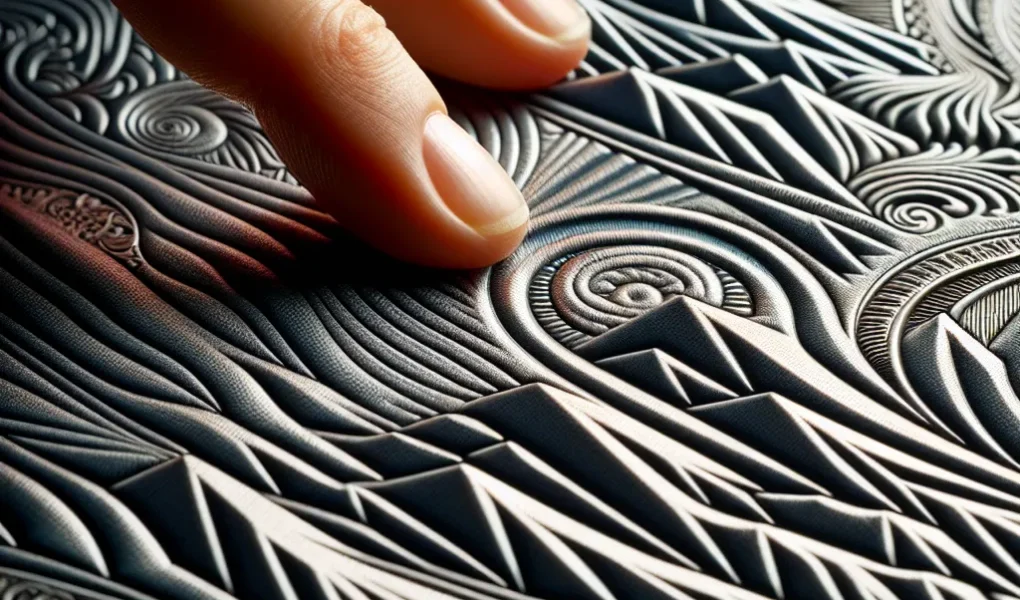The Rise of Textured Covers in Design: A Visual and Tactile Experience
Textured covers in design have seen a significant rise in popularity in recent years, offering a unique visual and tactile experience that captivates both designers and consumers alike. The appeal of textured covers lies in their ability to engage multiple senses, creating a more immersive and memorable experience. This trend has been embraced across various creative fields, including graphic design, packaging, book publishing, and product branding, with designers harnessing the power of texture to add depth, personality, and a distinct touch to their creations.
Creating Emotional Connections: The Psychology Behind Textured Designs
When it comes to design, creating emotional connections with the audience is a powerful tool. One way to achieve this is through the use of textured covers. The psychology behind the appeal of textured designs lies in the way they engage our senses and evoke specific emotions. By incorporating textures into a design, whether it’s a book cover, packaging, or marketing materials, designers can tap into the tactile sense of the audience, triggering feelings of comfort, curiosity, or even nostalgia.
Research has shown that different textures can elicit varied emotional responses. For example, a smooth, glossy texture might convey a sense of sleekness and modernity, while a rough, natural texture could evoke feelings of authenticity and ruggedness. By carefully selecting and combining textures, designers can create a multi-sensory experience that resonates with their target audience on a subconscious level.
Furthermore, textured covers can enhance the perceived value of a product. Studies have demonstrated that when an item is presented with a textured cover as opposed to a plain one, it is often perceived as higher quality and more desirable. This phenomenon can be attributed to the sensory stimulation and the idea of exclusivity and attention to detail that textured designs convey.
In conclusion, the psychology behind textured designs is a fascinating area of study in the world of design. By leveraging the power of textures to evoke emotions and enhance perceived value, designers can forge a deep and lasting connection with their audience, ultimately contributing to the success of their projects.
Unveiling the Artistry: Exploring Textured Covers in Graphic Design
Textured covers in graphic design have a unique appeal that captures the attention and imagination of both designers and consumers alike. The tactile experience offered by textured covers adds a layer of sensory engagement that elevates the overall aesthetic and functionality of the design. By incorporating various textures such as embossing, debossing, foil stamping, or unique material finishes, graphic designers can unveil their artistry and create visually striking and engaging covers.
One of the key aspects of textured covers in design is their ability to communicate and convey the essence of the content within. Whether it’s a book, magazine, brochure, or any other printed material, the tactile elements of a textured cover can provide a preview of the experience awaiting the audience inside. This tantalizing aspect serves to create a sense of anticipation and curiosity, prompting individuals to explore and engage with the design on a deeper level.
Furthermore, textured covers have the power to evoke an emotional response and leave a lasting impression. The interplay of light and shadow on textured surfaces creates a visual dynamism that stimulates the viewer’s senses and fosters a connection with the design. This tactile and visual harmony not only serves as a testament to the designer’s skill and artistry but also enhances the overall perception of the content.
Overall, through the artful integration of textured covers, graphic designers can elevate the appeal and allure of their creations, providing a multi-dimensional experience that resonates with the audience on both a visual and tactile level.
The Innovation of Texture: Redefining Design Aesthetics
Textured covers have been gaining popularity in the world of design, offering a tactile and visually appealing element to various products. The innovation of texture has played a pivotal role in redefining design aesthetics, captivating the senses and adding an extra dimension to visual communication. By integrating tactile elements into design, creators have successfully elevated the sensory experience, prompting a shift in the way audiences engage with and perceive various products.
The allure of textured covers lies in their ability to create a multisensory experience, appealing not only to the visual senses but also to the sense of touch. This innovative approach to design has opened up new avenues for creative expression, allowing designers to evoke specific emotions and establish memorable connections with their audience. Whether it’s the rough, earthy texture of recycled paper or the smooth, sleek finish of embossed leather, each texture has the power to convey a distinct message and elicit a unique response.
Furthermore, the introduction of textured covers has challenged traditional design norms, encouraging a departure from uniform and predictable aesthetics. The incorporation of texture brings depth and character to otherwise flat surfaces, breathing life into the overall design. This departure from conventional design principles has sparked a wave of experimentation, enabling designers to push boundaries and redefine the possibilities within the realm of visual and tactile aesthetics.
In conclusion, the innovation of texture in design has reshaped the way we perceive and interact with visual elements. By embracing textured covers, designers have unlocked a new realm of creative potential, setting the stage for a sensory journey that transcends the boundaries of traditional aesthetics.
The Functional Beauty: Textured Covers and User Experience Enhancement
Textured covers in design have become a popular choice among designers and consumers alike, thanks to their ability to enhance the user experience through tactile and visual stimulation. The functional beauty of textured covers lies in their ability to not only catch the eye but also provide a unique haptic experience for the user. This sensory engagement adds depth to the design and creates a more memorable interaction with the product.
When it comes to printed materials such as books, magazines, and packaging, the use of textured covers goes beyond aesthetics. It serves a practical purpose by improving grip and durability, making the product more user-friendly. The tactile feedback from a textured cover can evoke a sense of quality and craftsmanship, ultimately enhancing the perceived value of the product in the eyes of the consumer.
Furthermore, in digital design, the incorporation of textured covers through techniques like embossing or material-inspired graphics can bridge the gap between the physical and digital worlds. This fusion of tactile elements in a digital environment creates a multisensory experience, adding a layer of realism and tangibility to the virtual interface.
Overall, the appeal of textured covers in design lies in their ability to elevate the user experience by engaging multiple senses, improving functionality, and leaving a lasting impression. As designers continue to explore innovative ways to integrate textures into their creations, the role of textured covers in enhancing user experience is set to grow even further.



